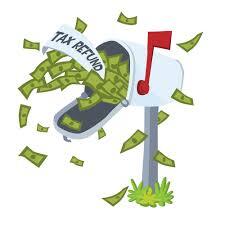
Paying tax is not a feeling any taxpayer likes. Having your income after working for a month or having a personal savings slash is no joke. The anger has pushed most taxpayers into seeking ways to reduce their taxes. And one legitimate way is through a tax refund.
Many have found that path resourceful and are digging thousands of tax refunds from the IRS to improve their financial situations. You can also start cutting off taxes by boosting your tax refund. A tax refund is legal, and here are four ways to get a whooping refund.
You need to update your filing status before submitting the returns to the IRS. The decision to file as a single or married person affects how your tax returns are treated. For married couples, the better option is to file jointly, but you still have the option of filing separately.
The separate filing methods are beneficial under certain conditions like, if one of the spouses pays large medical expenses or has many businesses. Filing your taxes separately can cut the gross income and increase your deductions, but the method is subject to major tax credits.
A high-yielding savings account is another hole most taxpayers hide their money. The method yields results for people without debt and who already have an emergency fund. You can start saving from the little money you make from a wedding, home sales, or use for vacation.
However, avoid it from hitting your checking account to avoid tax. The saving may not yet have definite use but will come in handy later. You can decide to have a single saving account or diversify your savings plans to many high-yielding accounts.
The IRS fixes a deadline for taxpayers to open a traditional IRA account for their previous tax year. However, the deadline can be affected by the weekend or holiday. Nevertheless, the window will allow you to file early taxes, claim your return, and use the refund to open the IRA account.
Traditional IRA contributions attract fewer taxes. The account offers a maximum contribution you can use when you are 50 years, and the catch-up provision will increase the IRA contributions. The Roth IRA account has no deduction but gives you a chance to use the valuable Saver’s Credit, but you must reach the requirements. Self-employed people are to open a self-employed retirement account before the deadline or file for an extension in order to boost their tax refund.
Tax credits cross all debt owed to the IRS, granting you a bigger tax refund than deductions. However, the condition of your filing status, income, and other requirements will determine your place in credits. For example, you can file for the American Opportunity Credit and Lifetime Learning Credit for educational reasons. There are also Earned Income Tax Credits (EITC) and Child and Dependent Care Credits.
In the 2022 tax season from the 2021 tax year, the American Rescue Plan lowered the premium for health insurance and, at the same time, made some changes, like the expansion of the childless EITC. The expansion makes it easier for a low-income household with a maximum of $1,502 on the tax credit to get a full refund but only during the tax season.
To be on the err side, check if you reach the requirement to avoid making silly mistakes. A taxpayer that uses the itemizing method of deduction can reach more deductible expenses like charitable donations, student loans, the Foreign Earned Income Exclusion (FEIE), home office costs for self-employed, etc.
FOR MORE INFORMATION ON HOW JIM McCLAFLIN, EA, NTPI FELLOW, CTRC CAN BEST HELP YOU WITH YOUR TAX FILING NEEDS, PLEASE CLICK THE BLUE TAB ON THIS PAGE.
THANKS FOR VISITING.
Jim McClaflin, EA, NTPI Fellow, CTRC